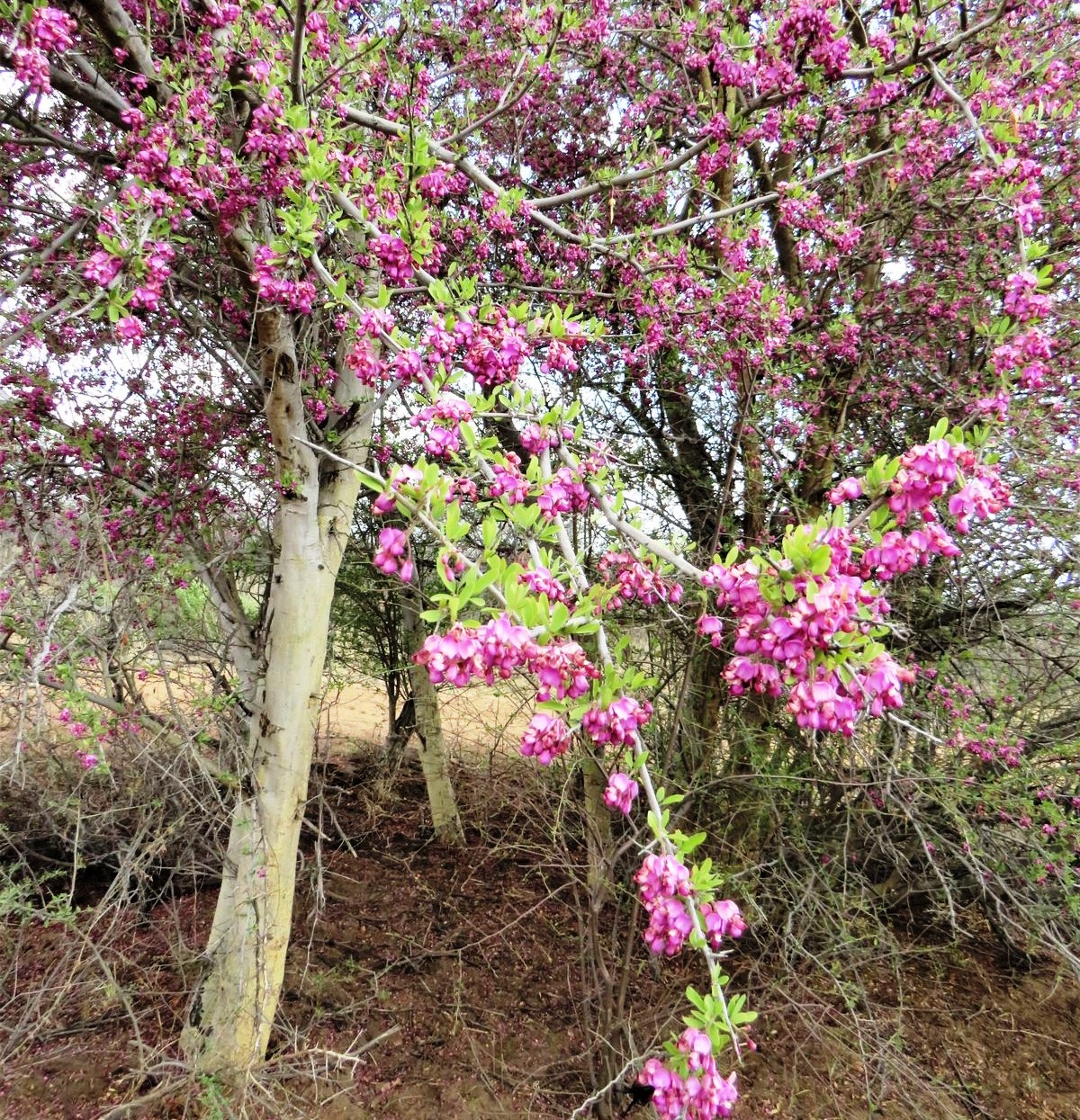Securidata longependuculat

|
|
Securidaca longepedunculata Common Names: Violet tree, Rhodesian violet, Fibre
tree, Wild wisteria, Senega root tree Scientific
Classification Kingdom: Plantae Clade: Tracheophytes Clade: Angiosperms Clade: Eudicots Clade: Rosids Order: Fabales Family: Polygalaceae Genus: Securidaca Species: S. longepedunculata Synonyms: Lophostylis angustifolia Hochst., Lophostylis oblongifolia Hochst., Lophostylis pallida Klotzsch, Securidaca angustifolia Miq., Elsota longipedunculata (Fresen.) Kuntze Morphological Description Securidaca longepedunculata is a semi-deciduous shrub or small tree, typically 2–6
meters tall, occasionally reaching 12 meters, with an open, spreading crown.
Its key characteristics include: · Bark: Young twigs yellow-green, maturing to rough, grey, stringy,
flaking to reveal yellow beneath; used medicinally and as a pesticide (Burkill,
1985). · Leaves: Alternate, thin, oblong to lanceolate (2–5 cm × 0.5–2 cm),
initially hairy, becoming glabrous; crowded at stem tips · Flowers: Small (1 cm), pink to purple, sweet-scented, in short
axillary or terminal racemes on long peduncles (3–15 cm); bloom early summer
(Prance & Jongkind, 2015). · Fruit: Round nut (1–1.5 cm), attached to a membranous wing (up to 4
cm), purple when young, beige when mature; fruiting April–August (Kew Science,
n.d.). Distribution and Habitat Securidaca longepedunculata is widespread across sub-Saharan Africa, adapting to diverse
environments: · Geographic Range: Found from Senegal to Ethiopia, south to
South Africa; prevalent in northern Nigeria (Sokoto, Borno, Gombe) and southern
Nigeria (Cross River); also in Kenya, Mali, Zambia, and Zimbabwe (Kew Science,
n.d.). · Habitat: Thrives in savannas, woodlands, Sahel regions, and forest
edges; prefers sandy, acidic, or rocky soils (pH 4.5–6.5) with 500–1,500 mm
annual rainfall; occurs at elevations up to 2,000 m. · Ecological Role: Supports pollinators like butterflies;
fruits dispersed by wind; used in agroforestry for soil conservation (Burkill,
1985). Ethnopharmacology Securidaca longepedunculata is a cornerstone of African traditional medicine, known as
“Uwar magunguna” (mother of medicines) in Hausa, with extensive
ethnopharmacological validation (Mongalo et al., 2015): · Anticancer: In Nigeria, root bark treats cancers. Ethanol root bark
extract inhibited U87 brain tumor cell proliferation (IC50: 20.5 µg/mL) by
inducing apoptosis via PARP cleavage, supporting its use against Ehrlich ascites
carcinoma (Lawal et al., 2012). · Antitrypanosomal: Root bark treats sleeping sickness in
Nigeria. · Antidiabetic: In Nigeria, roots manage diabetes
· Anticonvulsant: Root extracts treat epilepsy in Nigeria.
Aqueous root extract (400 mg/kg) delayed strychnine- and picrotoxin-induced
seizures in mice, with effects partially reversed by naloxone, indicating
opioid receptor involvement (Adeyemi et al., 2010). · Analgesic and Anti-inflammatory: Roots relieve pain and arthritis in
Nigeria. Aqueous root extract (200–400 mg/kg) reduced acetic acid-induced
nociception by 50% and formalin-induced inflammation in mice, linked to methyl
salicylate (90% of root volatiles) (Ojewole, 2008). · Aphrodisiac: Root bark treats erectile dysfunction in Nigeria. Two
xanthones (1,7-dimethoxy-2-hydroxyxanthone, 1,4-dihydroxy-7-methoxyxanthone)
relaxed corpus cavernosal smooth muscle by 97% at 1.8 × 10⁻⁵ mg/mL, comparable
to sildenafil (Meyer et al., 2006). · Antitubercular: In Mozambique, roots treat tuberculosis.
n-Hexane root extracts showed antimycobacterial activity against Mycobacterium
tuberculosis H37Ra (MIC: 15.6
µg/mL), suggesting potential anti-TB drug leads (Luo et al., 2011). ⚠ Toxicity Profile: Securidaca
longepedunculata is potent and
potentially toxic if misused. Roots contain methyl salicylate and xanthones,
which can cause gastrointestinal distress or neurological symptoms at high
doses. Acute toxicity studies showed no mortality at 2,000 mg/kg aqueous root
extract in mice, but chronic use may elevate liver enzymes (ALT increased by
10%). Used traditionally as arrow poison, indicating high toxicity.
Contraindicated in pregnancy, for children, and without expert supervision. Skin
contact with extracts may cause irritation (Mongalo et al., 2015). Additional Uses · Pesticidal: In Nigeria, powdered roots protect stored grains, achieving
100% mortality of weevils like Sitophilus zeamais after 6 days (Jayasekara et al., 2005). · Cultural: In Hausa culture, roots are used in rituals for spiritual
protection; applied to pomades to ward off bewitchment (Burkill, 1985). · Timber and Fibre: Bark yields strong fibre (buaze) for
cordage; wood used for small tools and fuel (Burkill, 1985). · Ecological: Enhances biodiversity in savannas, attracting birds and
butterflies; used in agroforestry for soil stabilization. References
External Links More Pictures |
|
| Compounds of Securidata longependuculat | |
| References |